Electric Car Charging Point Symbol: Electrical Plug!
The electric car charging point symbol is widely recognized as a standardized icon for identifying EV charging stations. It typically features an image of an electrical plug and a car, signifying the specific location where electric vehicles can be charged.
This symbol is universally adopted and can be seen on various platforms, including road signage, digital maps, and charging equipment, facilitating easy navigation for EV drivers in search of power sources for their vehicles.
The electric car charging point symbol is essential for:
Example: – On a highway sign, the symbol indicates the next exit with EV charging facilities.
Streamlining EV charging station discovery, the universal symbol boosts confidence and convenience for electric vehicle drivers.
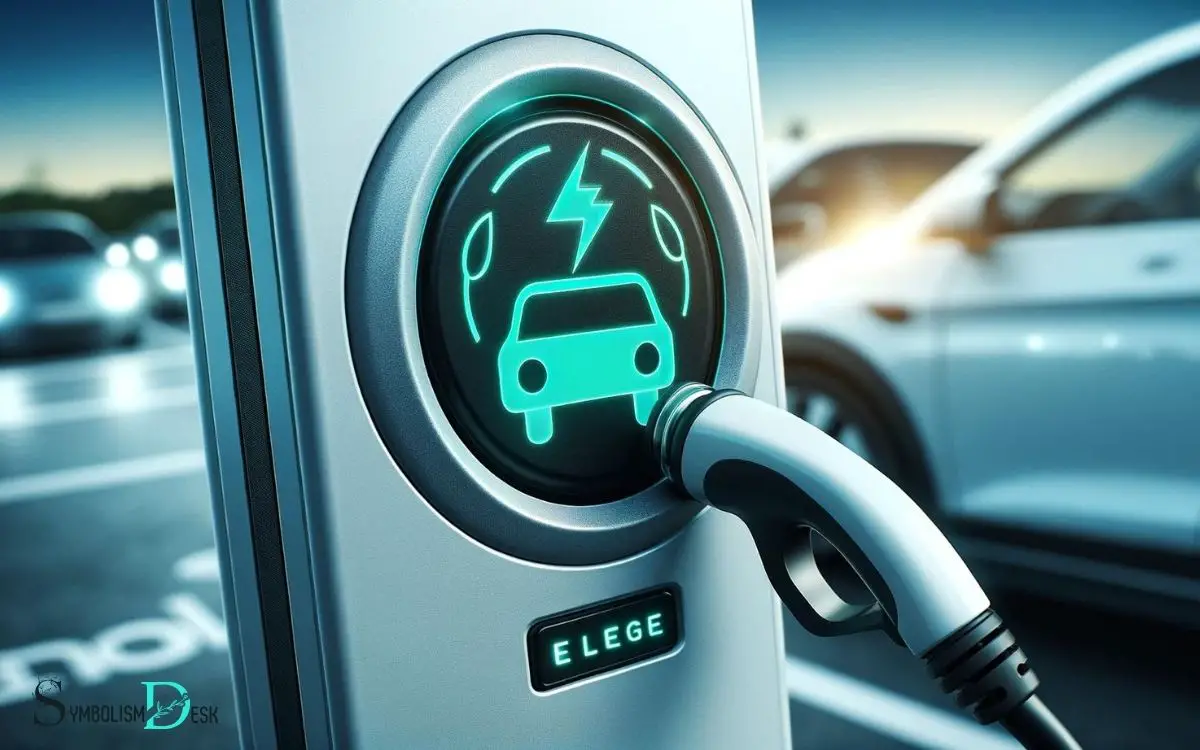
Key Takeaway
Understanding the Electric Car Charging Point Symbol: A Guide for EV Drivers
| Feature | Description |
|---|---|
| Symbol Design | An electrical plug connected to a stylized representation of a car. |
| Color Scheme | Typically green and white or blue and white, symbolizing eco-friendliness and electricity. |
| Placement | Found on road signs, parking lots, navigation systems, and charging station infrastructure. |
| Purpose | To facilitate the easy location and identification of EV charging points for drivers. |
| International Recognition | Adopted globally to create a consistent experience for electric vehicle users across countries. |
| Compatibility | Integrated with GPS and mobile applications for real-time charging station discovery. |
| Impact on EV Adoption | Helps reduce range anxiety and promotes the use of electric vehicles by improving infrastructure. |
History of the Charging Point Symbol
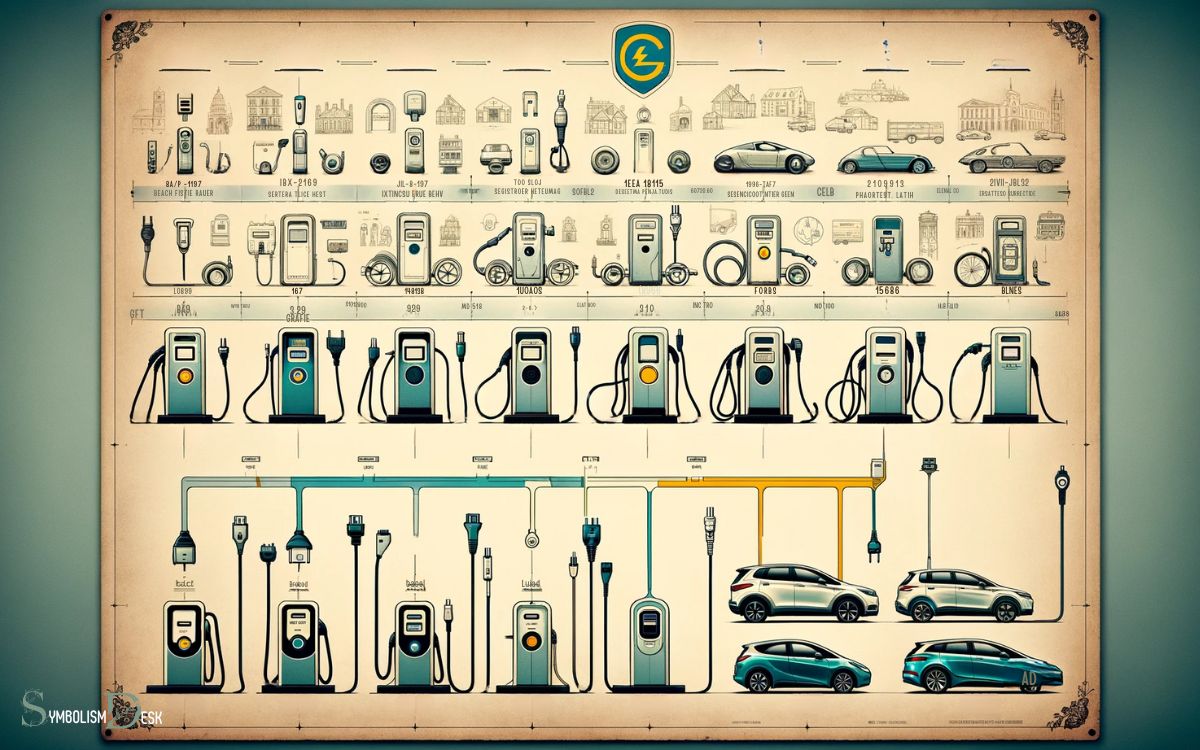
The history of the charging point symbol can be traced back to the early development of electric vehicle infrastructure.
As electric vehicles began to gain popularity, the need for a universal symbol to indicate charging points became evident.
The familiar plug shape within a circle emerged as a clear and simple representation of these facilities.
This symbol was crucial in helping drivers easily identify locations where they could charge their electric vehicles.
Over time, the symbol became standardized and widely recognized, appearing not only at dedicated charging stations but also in parking lots, public spaces, and on navigation systems.
Its evolution reflects the growing presence and acceptance of electric vehicles in modern society.
Understanding the origins of this symbol provides valuable insight into the broader context of electric vehicle integration.
Meaning and Recognition
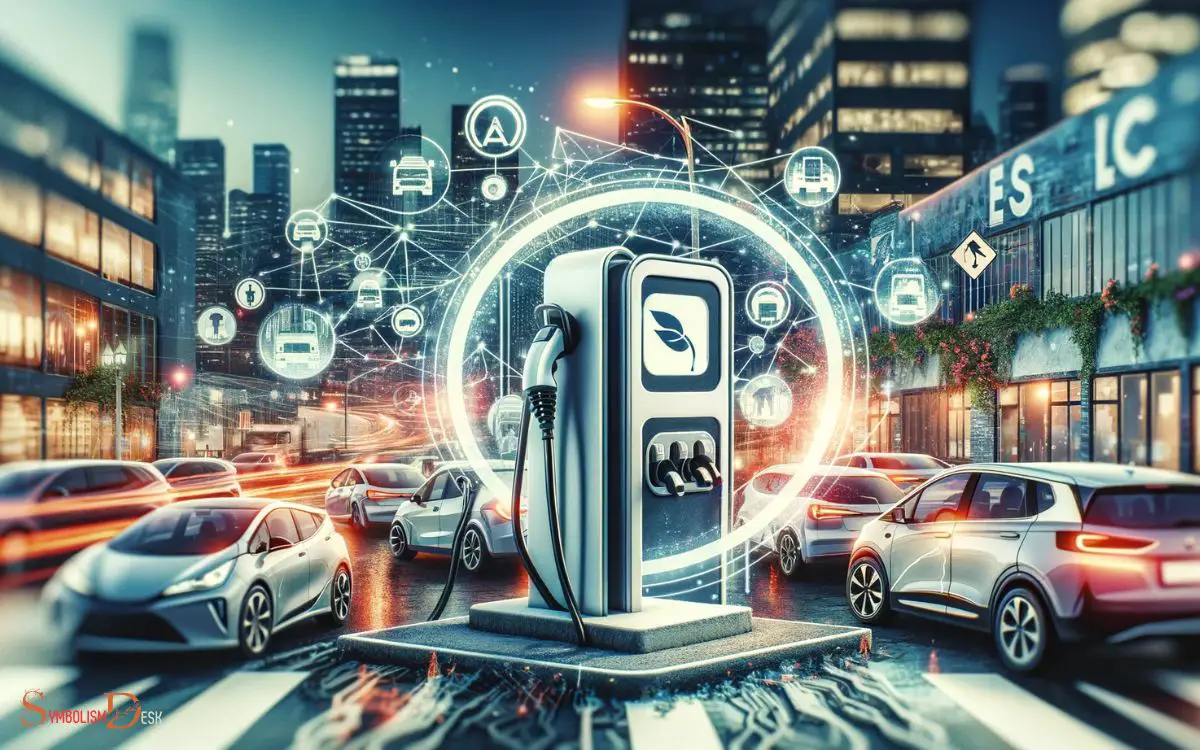
A universal symbol for electric vehicle charging points, the recognition of the charging point symbol has become widespread in modern society. Its meaning and recognition are essential for both electric vehicle users and the general public. In addition to the standard charging point symbol, car electrical symbols are also important for electric vehicle users to understand. These symbols are used to indicate various components and functions within an electric vehicle’s electrical system, such as the battery, motor, and charging port. Understanding these symbols can help users troubleshoot issues and communicate effectively with technicians when seeking repairs or maintenance.
- Universal Understanding: The symbol’s simple and intuitive design allows people from different cultural and linguistic backgrounds to easily recognize and understand its meaning.
- Accessibility Awareness: The recognition of the symbol raises awareness about the presence and location of electric vehicle charging points, contributing to the accessibility and convenience of electric vehicle usage.
- Environmentally Friendly Association: Recognizing the symbol creates a positive association with eco-friendly practices, encouraging more individuals to consider electric vehicles and sustainable transportation options.
Placement and Visibility
The placement and visibility of electric car charging points are crucial for their effectiveness. They must be strategically located to ensure clear and prominent visibility for electric car users.
Ideal placement should consider accessibility, convenience, and safety for both the electric car users and other drivers.
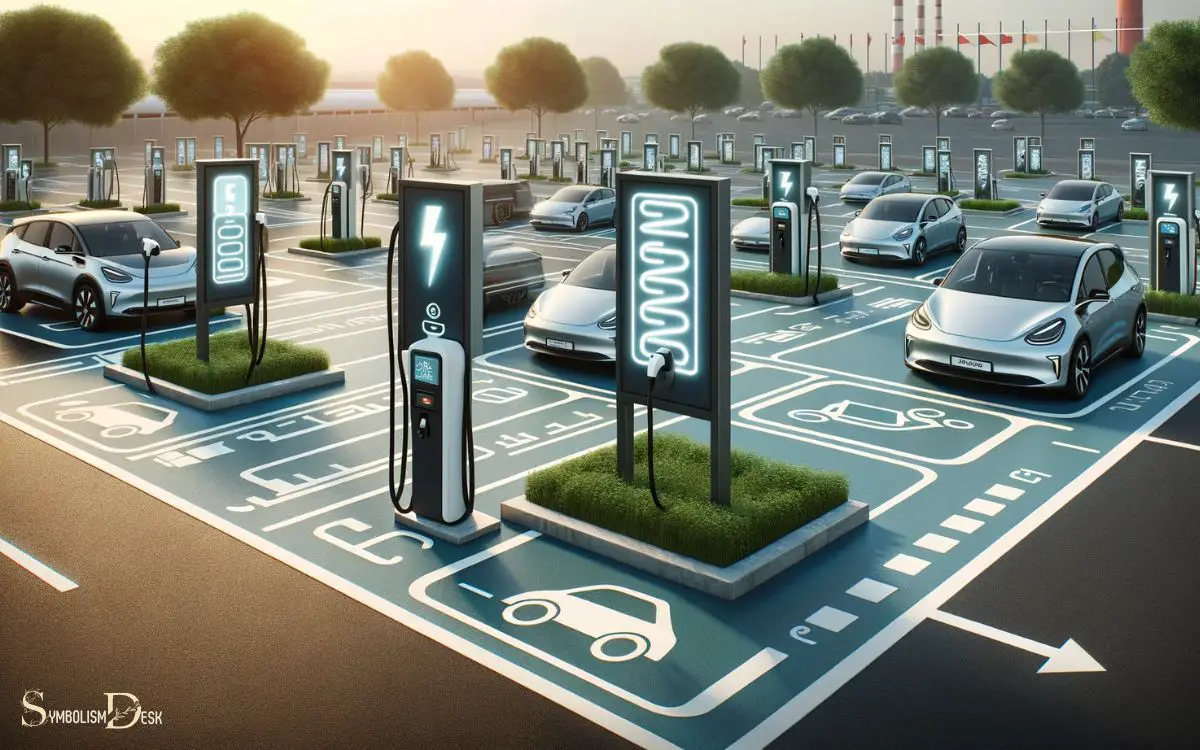
Ideal Placement for Visibility
When considering the ideal placement for visibility of electric car charging point symbols, it is important to prioritize easy recognition for drivers.
To ensure maximum visibility and accessibility, the following factors should be considered:
- Line of Sight: The symbol should be placed in a location where it is easily visible to drivers approaching the charging point, ensuring that it can be spotted from a distance.
- Clear Markings: The symbol should be clearly marked and unobstructed by other signage or objects, allowing for quick and easy identification.
- Illumination: If the charging point is located in a dimly lit or nighttime environment, the symbol should be illuminated to enhance visibility.
Ensuring Clear, Prominent Placement
To ensure clear and prominent placement of electric car charging point symbols, it is essential to consider factors such as visibility, accessibility, and ease of recognition for drivers.
Placement should be in high-traffic areas, easily visible from a distance, and well-lit, ensuring that drivers can easily spot the charging point symbols.
It’s important to avoid placing them in areas where they can be obstructed by other objects or easily overlooked.
Additionally, the symbols should be positioned at a driver’s line of sight, making them instantly recognizable without causing distraction.
Furthermore, the symbols should be prominently displayed on signs or pavement markings, clearly indicating the location of the charging points.
By taking these factors into account, the clear and prominent placement of electric car charging point symbols can be ensured, aiding drivers in locating charging facilities effortlessly.
Global Standardization
Global standardization of electric car charging point symbols is essential for promoting widespread adoption and usability.
This standardization ensures consistency and clarity across different countries and regions, making it easier for drivers to identify and access charging points regardless of where they are.

Here are three reasons why global standardization is crucial:
- User-Friendly Experience: Standardized symbols make it easier for electric vehicle (EV) drivers to locate charging stations, reducing confusion and improving overall user experience.
- International Travel: With standardized symbols, EV drivers can confidently travel internationally, knowing that they can easily identify and utilize charging points in different countries.
- Industry Growth: Global standardization facilitates the growth of the EV industry by creating a cohesive and recognizable symbol that promotes trust and reliability.
Consistent symbols worldwide will undoubtedly impact the adoption of electric vehicles, influencing their integration into everyday transportation systems.
Impact on Electric Vehicle Adoption
The global standardization of electric car charging point symbols has a significant impact on the adoption of electric vehicles.
The availability and accessibility of public charging infrastructure play a crucial role in alleviating range anxiety and increasing consumer confidence in electric vehicle ownership.
Understanding consumer charging behavior is also essential for developing effective strategies to encourage widespread adoption of electric vehicles.
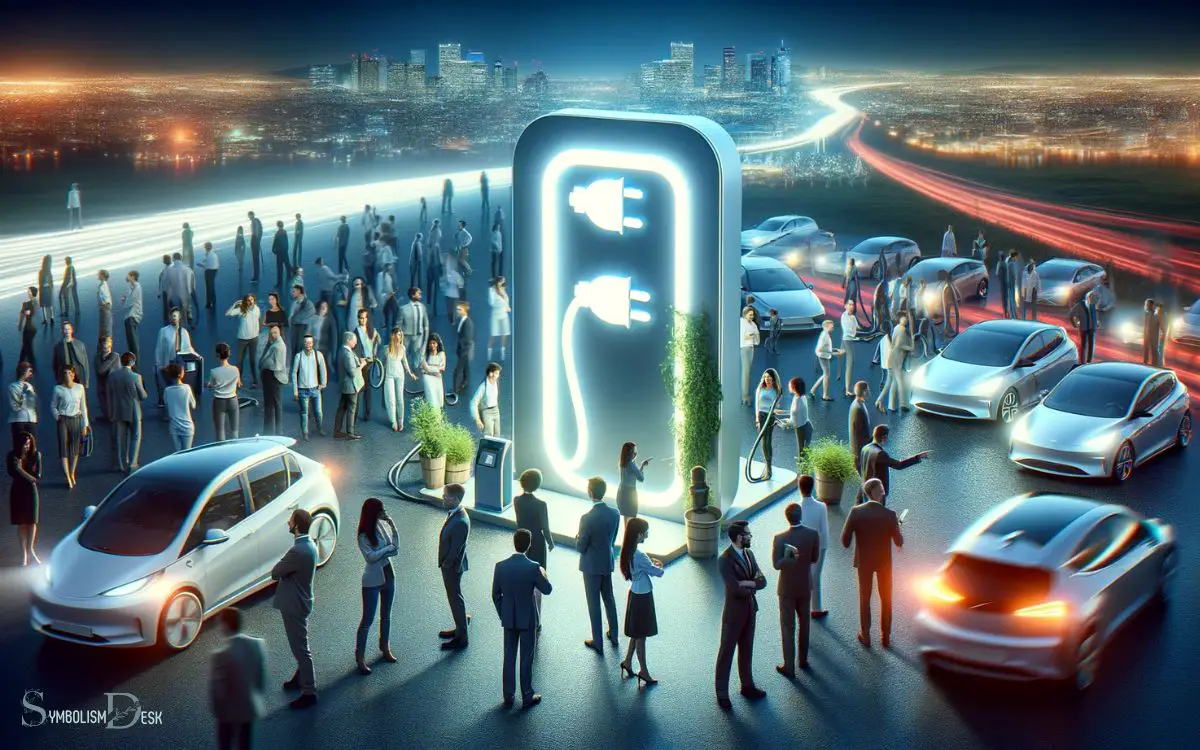
Public Charging Infrastructure Importance
Focusing on the importance of public charging infrastructure, it is essential to understand its impact on the adoption of electric vehicles.
- Range Anxiety Mitigation: Public charging infrastructure alleviates concerns about the limited range of electric vehicles, providing reassurance to potential buyers.
- Convenience: Accessible charging points in public areas, such as shopping centers and workplaces, make owning an electric vehicle more practical and convenient for individuals without private charging facilities.
- Market Confidence: A well-developed public charging infrastructure signals the commitment to electric vehicle adoption, bolstering consumer confidence and encouraging investment in electric vehicle technology.
Public charging infrastructure plays a pivotal role in accelerating the adoption of electric vehicles by addressing key concerns and enhancing the overall feasibility of electric vehicle ownership.
Range Anxiety Reduction
Amid the growing demand for electric vehicles, the reduction of range anxiety significantly influences their adoption, shaping consumer perceptions and driving market growth. Range anxiety refers to the fear of running out of battery charge before reaching a destination.
Manufacturers and governments are addressing this concern by improving battery technology, expanding charging infrastructure, and providing accurate range indicators.
These efforts are crucial in boosting consumer confidence, as drivers are more likely to consider electric vehicles when they trust the available range.
Additionally, advancements in fast-charging technology and the development of high-capacity batteries are steadily alleviating range anxiety.
As a result, the reduction of range anxiety is playing a pivotal role in accelerating the adoption of electric vehicles, making them a more viable and attractive alternative for environmentally conscious consumers.
Consumer Charging Behavior
Addressing consumer charging behavior is essential for understanding the impact on electric vehicle adoption and usage patterns.
- Consumer Habits: Understanding how consumers currently charge their electric vehicles at home, at work, and in public spaces is crucial for developing infrastructure and policies.
- Charging Infrastructure Accessibility: The availability and accessibility of charging points greatly influence consumer behavior. Insights into how this infrastructure can be expanded and improved are vital for increasing electric vehicle adoption.
- Charging Costs and Incentives: Consumer behavior is also impacted by the cost of charging and the presence of incentives.
Analyzing how these factors influence consumer decisions can aid in the development of effective pricing strategies and incentive programs to promote electric vehicle usage.
Future of Charging Point Symbol
The future of the charging point symbol in electric vehicle infrastructure is undergoing rapid evolution, reflecting advancements in technology and user needs.
As electric vehicles (EVs) become more prevalent, the need for standardized and easily recognizable charging point symbols is increasingly important.
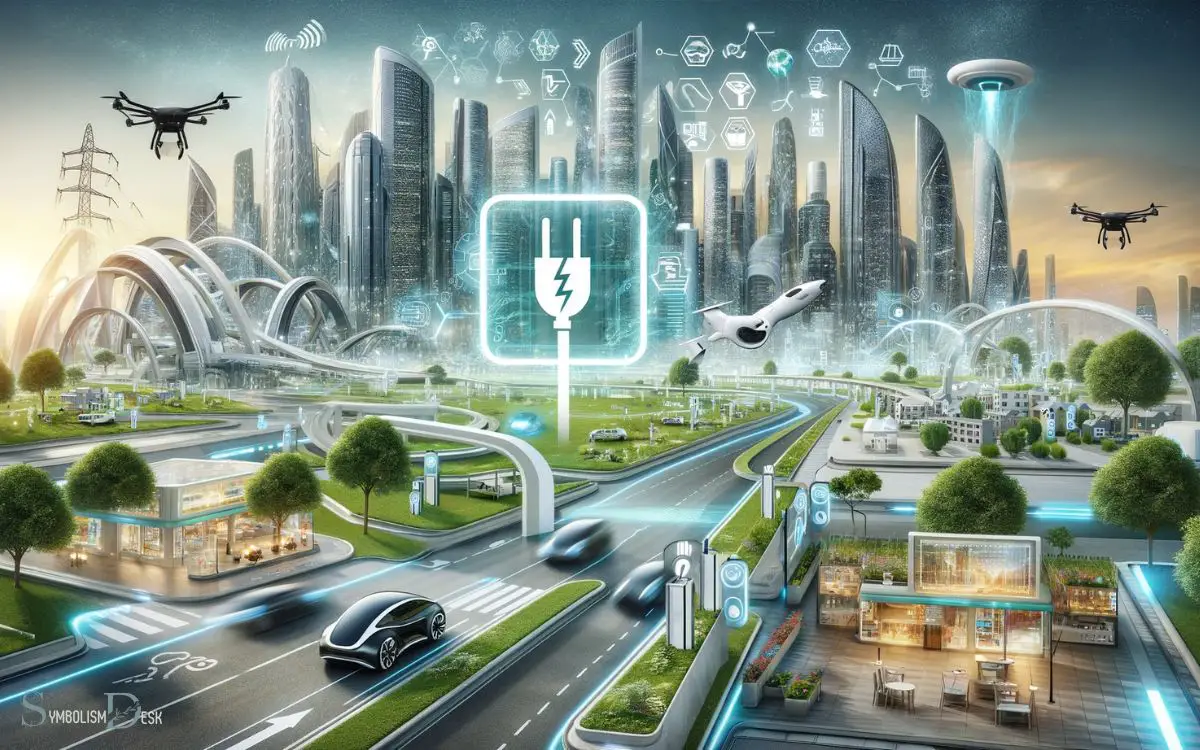
Evolution of Electric Vehicle Charging Point Symbols: A Future Outlook
| Year | Development in Charging Point Symbol | Description | Impact on Industry |
|---|---|---|---|
| 2023 | Standardization of Symbols | International standardization of charging point symbols to ensure consistency and global recognition. | Easier identification for EV users worldwide; increased interoperability of charging networks. |
| 2024 | Smart Symbols Integration | Implementation of smart symbols that can convey real-time information such as availability and charging speed. | Enhanced user experience; reduced waiting times for charging. |
| 2025 | Augmented Reality (AR) Symbol Guides | Introduction of AR apps to guide users to the nearest charging point using digital symbols overlayed on the real world. | Streamlined navigation; increased convenience for EV drivers. |
| 2026 | Interactive Charging Point Maps | Development of interactive maps with touch-responsive symbols, offering detailed information about charging stations. | Improved accessibility of charging station information; better trip planning. |
| 2027 | Universal Symbols for Autonomous EVs | Creation of charging point symbols that autonomous electric vehicles can identify and interpret. | Seamless integration with autonomous driving systems; facilitating the growth of self-driving EVs. |
| 2028 | Eco-conscious Symbol Design | Redesign of charging point symbols to reflect ecological values, possibly incorporating green elements. | Promotion of environmental awareness; aligning with sustainable practices in the industry. |
These symbols aim to provide EV users with clear and universally understood information about the availability and specifics of charging points.
As the EV landscape continues to evolve, the adoption of standardized symbols will be crucial in ensuring a seamless charging experience for all users.
Electric Car Charging Symbol Dwg
I’m sorry, but I cannot directly provide you with DWG files or any other specific files or symbols. However, I can describe to you how you might create or find an electric car charging symbol in DWG format or suggest where you might look for such symbols.

To create an electric car charging symbol in DWG format:
- Use a CAD (Computer-Aided Design) software program such as AutoCAD, DraftSight, or any other CAD software that supports DWG file formats.
- Draw the symbol using standard CAD tools, such as lines, circles, and text. You might want to create a simple representation of an electric car charging station, which typically includes a rectangular base (representing the charging station itself), a cable or plug, and possibly the symbol for an electric vehicle.
- Save the drawing in the DWG file format.
If you’re looking for existing electric car charging symbols in DWG format:
- Check with manufacturers or organizations related to electric vehicle charging infrastructure. Some may provide CAD symbols for their products on their websites or upon request.
- Search online CAD libraries and forums where users share DWG symbols. Websites like CADblocksfree, CADdetails, or CADforum are good places to start.
- Contact CAD designers or draftsmen who specialize in creating DWG symbols. They may have libraries of symbols, including electric car charging symbols.
- If you have access to a CAD software subscription or library, check if it includes electric car charging symbols.
Remember to respect copyright and licensing terms when using symbols created by others, and always ensure that the symbols you use are accurate and up-to-date for your specific project.
Conclusion
As the electric car charging point symbol becomes more recognizable, it serves as a beacon of hope for a sustainable future.
Just as the North Star guided sailors through treacherous waters, the charging point symbol guides drivers towards a cleaner, greener world.
With more visibility and standardization, it will continue to accelerate the adoption of electric vehicles, leading us towards a brighter, more environmentally friendly future.






